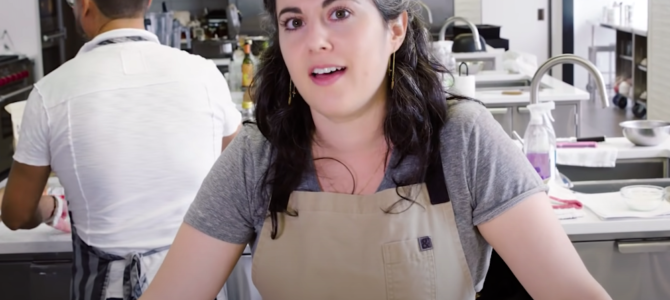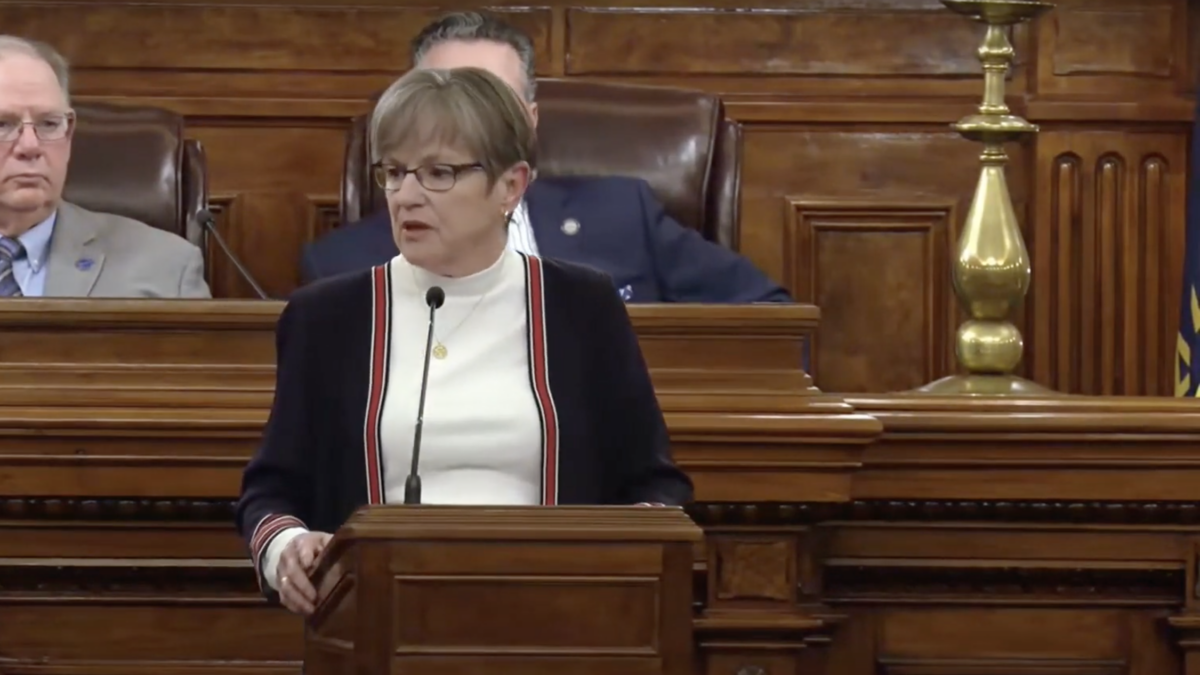
During the lockdown regime of the past year, millions of Americans turned to their televisions, computers, and phone screens to escape despair. Because we are creatures of innovation and curiosity, however, many people taught themselves to make sourdough bread starters from the internet and something new the next day.
The bread-baking game got so out of hand at one point this summer that yeast vanished from grocery store shelves. The appetite for hobbies, knowledge, and bread was ferocious.
Suddenly barred from dining out, the gastronomically inclined turned to their own kitchens, ordered new tools from the internet, and taught themselves culinary tricks. Social media overflowed with images of the burgeoning class of new home chefs, spurned from their favorite table at Le Diplomate but finally finding joy in sipping Gamay at home while searing their first-ever magret de canard.
It takes a nearly perfect combination of skill, approachability, and charisma to hook an audience the way Julia Child did, but one cooking channel stood above the rest, garnering millions of loyal followers even before the pandemic. Bon Appetit’s “Test Kitchen” series on YouTube seemed to truly understand people’s modern need for a combination of real instruction with a willingness to fail.
Even in the vast sea of online cooking shows, this one stood out. Imagine the natural give and take of NBC’s enormously popular sitcom “Friends” in a cooking show. That was the vibe from the bright and engaging stars of the “Test Kitchen.”
Even with all its charisma and promise, however, Bon Appetit couldn’t stave off the death grip of leftist ideology. It became one more source of entertainment and inspiration relegated to the burning cultural heap just when Americans most needed a pandemic and political escape.
Bon Appetit Used to Be So Fun
In its first episode, food editor Claire Saffitz delighted viewers in her “Gourmet Makes” segments in repeated attempts to reproduce a gourmet Twinkie. This episode received more than 6 million views on YouTube. In another episode, Saffitz and her team reproduced Bagel Bites. Other episodes featured attempts at Oreos, Skittles, and Pringles.
Brad Leone kicked off the channel’s success with his series of “It’s Alive!” videos that started out as small, experimental time-lapsed videos of Leone showing viewers different recipes made with living foods. It’s science, yes, and on paper, it even sounds like something that might air at 3:00 a.m. on cable access, but Leone made the videos a must-watch with his floppy hair, backward baseball cap, and disinterest in precise measurements. Whether the final product would taste delicious or explode upon opening was a common concern.
The formula of the show’s success was based on being sometimes chaotic and always unscripted, with the many mistakes left in the final product. The episodes featured frequent cameos from Bon Appetit chefs who popped by to offer advice.
With its gleaming marble countertops and massive 35th-floor view from One World Trade Center in downtown Manhattan, the “Test Kitchen” set was exactly the visual tonic America needed. Bon Appetit became the fastest-growing food-related channel on YouTube, enjoying 40 million monthly views, more than 5 million subscribers, and more than 5 billion minutes watched.
Bon Appetit’s cooking channel should have been one of the bright spots during the pandemic. It should have been a common, nonpolitical intersection where we could all just laugh about yet again ruining our attempt at latkes. At first, it was just that. The Bon Appetit crew adapted almost seamlessly from the high-rise to their home kitchens across the tri-state area. Gleaming stainless cooking surfaces were replaced with cramped quarters, but the stars still shone just as bright.
But in a flash, the “Friends” vibe was dead, and so was the Bon Appetit cooking channel.
The Woke Mob Comes for All
It was murdered in June 2020 by a furious spasm of wokism aimed at Bon Appetit and its publisher, Conde Nast. Both magazine and publisher were accused of insensitivity to employees of any color but peach. There were also accusations of “cultural insensitivity,” disparities in compensation, ill-treatment in the workplace, and tokenism.
The unraveling began just after the May 25 killing of George Floyd in police custody. The once-lionized editor of Bon Appetit, Adam Rapoport, resigned June 8 following the release of a photo taken 16 years ago, reportedly showing him in “brownface” at a costume party. He denied he had altered his face color, but continued internal denunciation made his continued leadership impossible. Weeks after the initial controversy, eight Bon Appetit “Test Kitchen” star chefs, the heart and soul of the show’s success, announced they would no longer appear on the program.
Like many other companies, Bon Appetit felt compelled to declare “solidarity” with the rapidly emerging Black Lives Matter movement, publishing, “Here at BA, we’re often talking about recipes, cooking techniques, and emerging restaurants … but we also understand that food is inherently political.”
At the lowest point in 2020, as the nation ripped in two politically and stared down a dark tunnel of lockdowns and financial ruin, the cheerful Bon Appetit YouTube channel went silent. They would not post another new video for four months, leaving us with their last-ever upload from the cast we all grew to love, “Pro Chefs Improve Boxed Brownies.”
Bon Appetit promised that followers could expect to see “more stories from restaurant owners and staff at the front lines of these protests” and more attention paid to black-owned food businesses. The magazine said it would be “tackling more of the racial and political issues at the core of the food world” and encouraged followers to donate to race-based organizations.
The statement wasn’t that dissimilar from statements made by many other organizations. What the editors at Bon Appetit did not expect was the backlash. Apparently, minority employees of the magazine harbored long-standing grievances. To them, Bon Appetit’s newfound religion smacked of hypocrisy, and they wasted no time letting the world know.
As the weeks unfolded and Black Lives Matter came to dominate the national conversation, Bon Appetit began fighting a losing battle. Every time it made a greater commitment to inclusion and racial sensitivity, demands grew and new charges erupted. Charges of unequal pay and mistreatment evolved into charges of “cultural appropriation.” Heads continued to roll.
Reborn Bon Appetit Was Not Appetizing at All
Then after the months-long silence, the Bon Appetit YouTube channel flickered back to life, but the new videos only cemented what many had come to fear: The channel, which abandoned her fans when they needed her most, returned as a Frankenstein’s monster.
The first video wasn’t about cooking. It featured no levity except that which was written into the carefully produced segment. The charm was gone. It was just an introductory video from the new leadership team: executive editor Sonia Chopra, global brand adviser chef Marcus Samuelsson, and editor-in-chief Dawn Davis.
The three new faces discussed terms such as “food inequity” and promised a heightened focus on skin color for future content, but what they have delivered appears to be the opposite. In a strike to avoid accusations of “cultural appropriation,” it seems, the new channel has relegated chefs to creating recipes on camera that seem to correlate with their skin color and apparent ethnicity.
I guess it probably sounded OK to tell the white chefs they can’t cook Jamaican Escovitch, but it seems a bad look to see Sophia Roe, an Indian woman who has no doubt worked hard as a chef to get where she is, only to be cast in a video making curry.
Bon Appetit might not have a grasp on “food equity” either. The content of the new videos has departed from whimsical takes on comfort food and heavenly recipes for sour cream and scallion biscuits to vegan versions of dishes and how to slow-roast goat. I know a lot of people who have gotten into biscuits during the pandemic. I don’t know any who have decided to start braising goat.
Ingredients in the videos made the jump from “everyday” to “unusual,” again putting a question to the repeated promise of “food equity” from the magazine’s new leadership team. Breadfruit is great for all the viewers in tropical areas, but for the majority of the audience, it’s simply not available. Fried oyster mushrooms seem simple enough, but that ingredient doesn’t appear outside of urban markets or specialty grocers.
Politicization Kills Everything
The newest viewer numbers reflect the failure of Bon Appetit’s relaunch. The channel easily captured millions of views per video prior to the fallout, regardless of who hosted the show. The most popular video since the channel came back to life in October is “Brad and Andy Grill Garbage Fish,” which was the first video featuring Leone in several months. After more than a month online, it has not yet gotten a million views, something that used to happen within a week.
The second most popular video from the new era was the first Bon Appetit pushed out: “Test Kitchen” director Chris Morocco making “weeknight meatballs.” Between the simplistic cooking instructions and complaints about his missing blender, Morocco managed to create one of the saddest cooking videos ever committed to the internet.
From his new home in Pennsylvania, he looked sadly into the camera and gave some vague pledge of having feelings for what happened at Bon Appetit — then, on to boring meatballs. That video has 792,000 views. With rare exceptions — videos featuring Leone — everything since then has been a fraction of that.
Leone, the show’s original star who kicked off the popularity of the videos, remains in place for now, but it’s impossible not to see his role has diminished. Once credited as the “Manager of the BA Test Kitchen,” Leone now dutifully introduces himself above a tag that says, “BA Video Host.” The first “It’s Alive!” with Leone after nearly five months of hiatus was, almost poetically, about how to compost garbage.
The collapse of the Bon Appetit channel during a pandemic-fueled cooking craze proved the screeching power of outrage mob rule. The entire saga has made one thing clear: You can politicize everything, as the mob demands, or you can create a vibrant, innovative culture — but you can’t have both.









